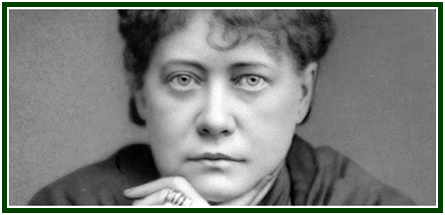The Energy of Our Spiritual
Soul Does Not Always
Have Immediate
Effects on Lower and Denser Planes
Carlos Cardoso Aveline

Cosmic cycles are somehow present in daily life. Sleep is the equivalent to a brief pralaya, a pause in one’s private universe of physical consciousness.
Each night we spend some time in deep sleep and perhaps experience other aspects of that higher existence that flows beyond the realm of our lower self. While we are doing this we transcend (in part, and for a moment) the circle of Maya or Illusion.
Yet we do not always bring much of that life into the daily “waking” consciousness.
Both Maine de Biran, in his “Nouveaux Essais D’Anthropologie”, [1] and H.P. Blavatsky have shown that Karma, or Action, develops in lines inter-related but relatively independent from each other, on different levels of reality, with varying degrees of density.
Félix Ravaisson, one of the French philosophers who were influenced by Maine de Biran, had these words quoted by H.P. Blavatsky:
“The real existence, the life of which every other life is but an imperfect outline, a faint sketch, is that of the Soul.” [2]
Indeed the life of our spiritual Soul does not always have short term consequences on lower and denser planes.
It takes time for the learner to solve the septenary mystery of being really awake. Progress is gradual, and more than one incarnation is certainly necessary for life to get immediately septenary in its multi-layered consciousness.
This must be taken into consideration when we see limitations and shortcomings in fellow-students of philosophy, or in ourselves. If we know that they are sincere and are trying their best, it is wise to remember that there is a difference between sowing and harvesting. The relation between the karmic lines unfolding on different planes of consciousness is complex. A celestial energy may need a significant amount of time before it reaches the earthly plane.
On higher layers of reality, events occur which are not remembered in one’s waking consciousness.
Before being born into his current incarnation, for example, every human being (with few exceptions) has had a direct experience at higher levels of consciousness. The Devachan is the long and blessed experience that occurs between two physical lives. Its chronological proximity to our current “waking” state makes it possible for us to understand the very substance of the higher life. Furthermore, we all experience states in some way equivalent to Devachan, during each good night’s sleep.
Some individuals are more awake to spiritual reality while their physical bodies sleep. The reverse is true: at the current stage of human evolution, for many, if they are physically awake, it necessarily means that they are spiritually asleep.
As long as we do not pay proper attention to life within and life without, our waking consciousness becomes nothing more than an illusory and disorienting dream. So-called “physical life” can be a kind of sleepwalking. There are many people who dream with their eyes open, and when they wake up and finally regain their common sense, they get shocked by what they see.
We should ask ourselves to what extent we are indeed awake. According to esoteric philosophy, true reality is more subtle and more stable than the ever-changing, dream-like conditions that reign in physical life.
Awakening in a real way is a function of wisdom.
It is correct to constantly observe one’s relationship with the process of sleep, with dreams, with so-called waking life, and with the voice of our conscience. Such a practice leads us to a more continuous Attention, as we move through the various states of consciousness that succeed one another, again and again, every day.
NOTES:
[1] “Oeuvres de Maine de Biran”, Tome XIV, Introductions par Pierre Tisserand et Henri Gouhier, Presses Universitaires de France, Paris, 1949, 440 pages, see pp.195-402.
[2] “Memory in the Dying”, an article by H.P.B. included in “Theosophical Articles”, H.P. Blavatsky, Theosophy Co., Los Angeles, volume II, 1981. See p. 378. There is a previous mention to Ravaisson a few paragraphs earlier.
000
The article “Different Lines of Life” is available on the websites of the Independent Lodge of Theosophists since December 2016.
000
Read more:
000

Helena Blavatsky (photo) wrote these words: “Deserve, then desire”.
000
